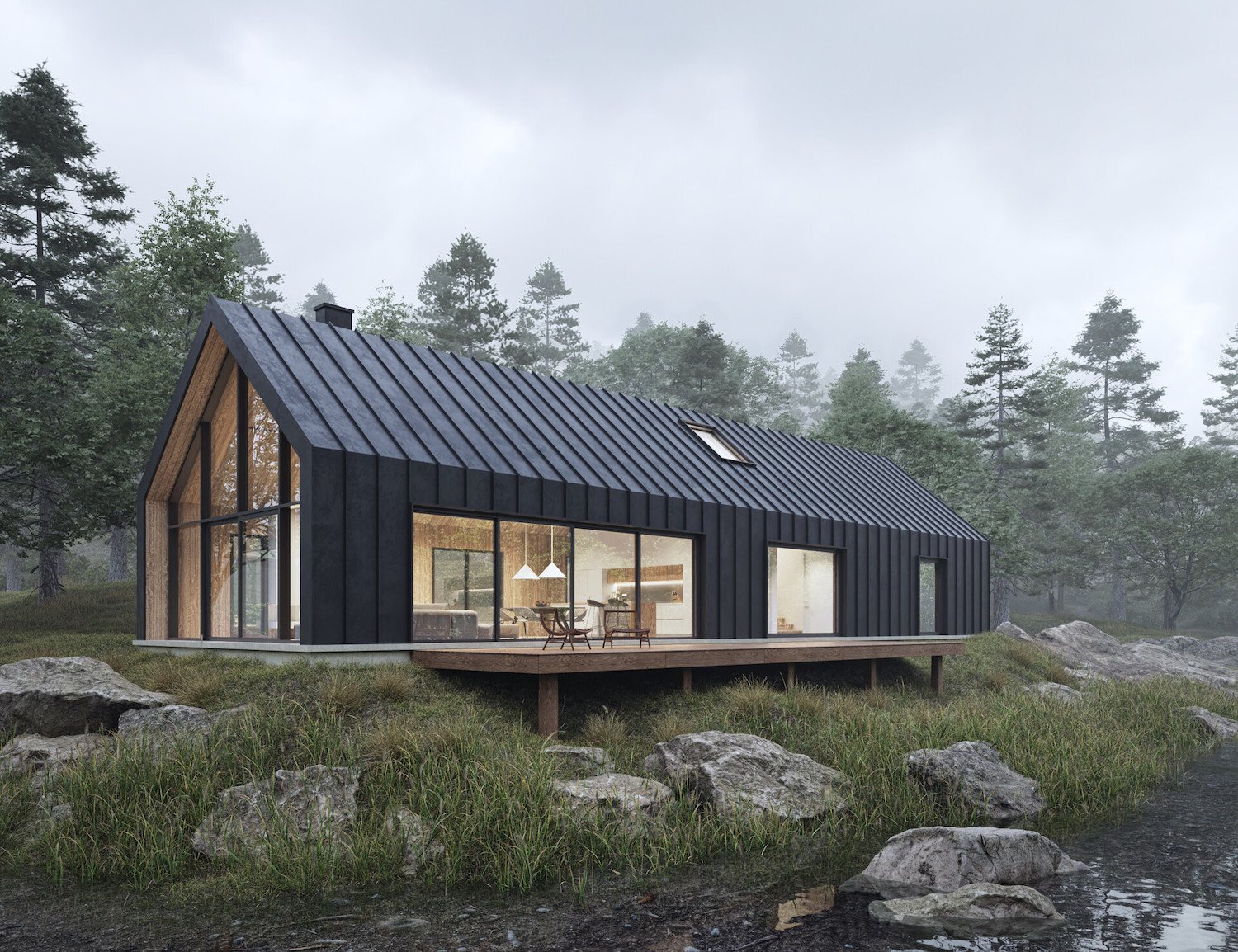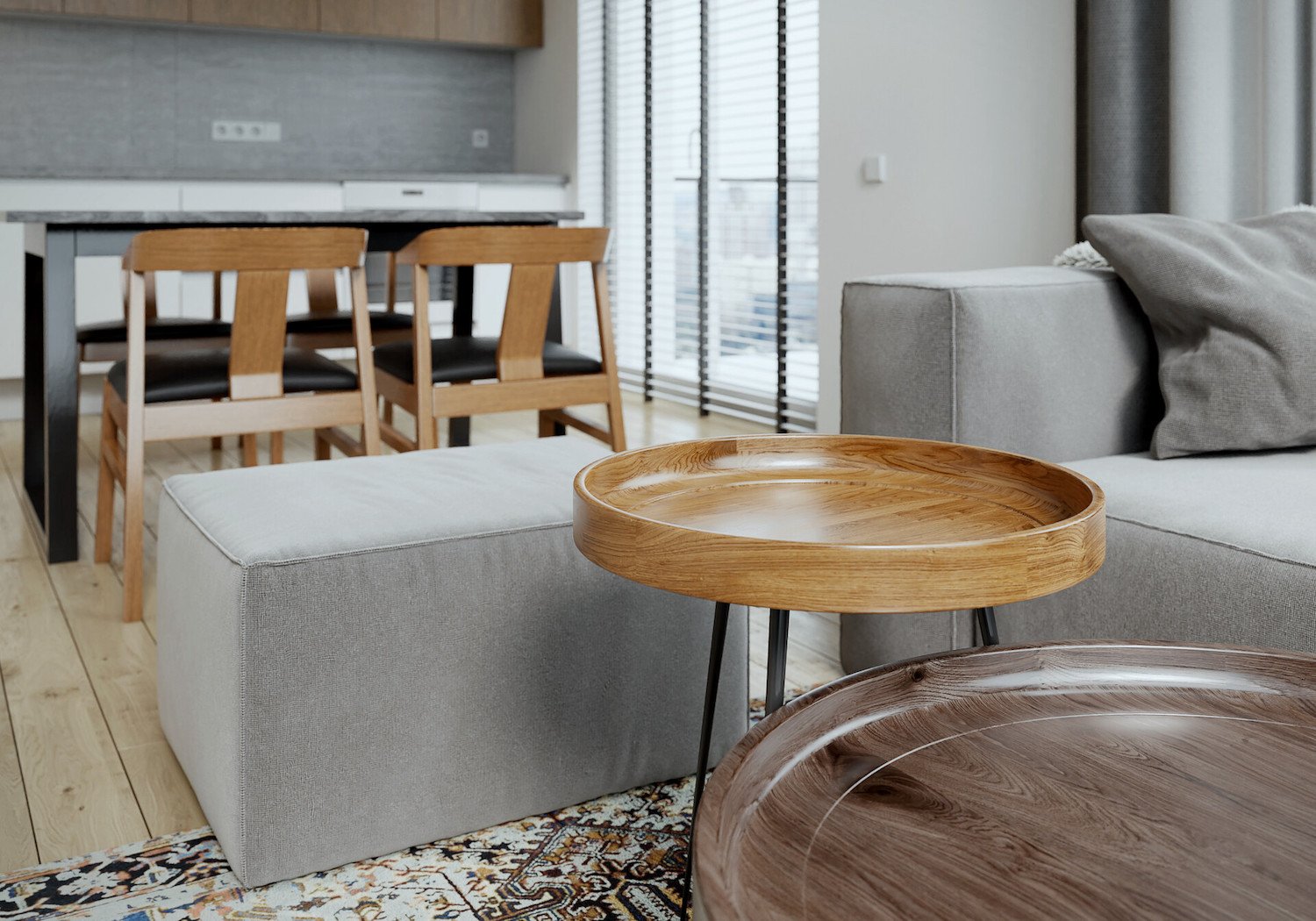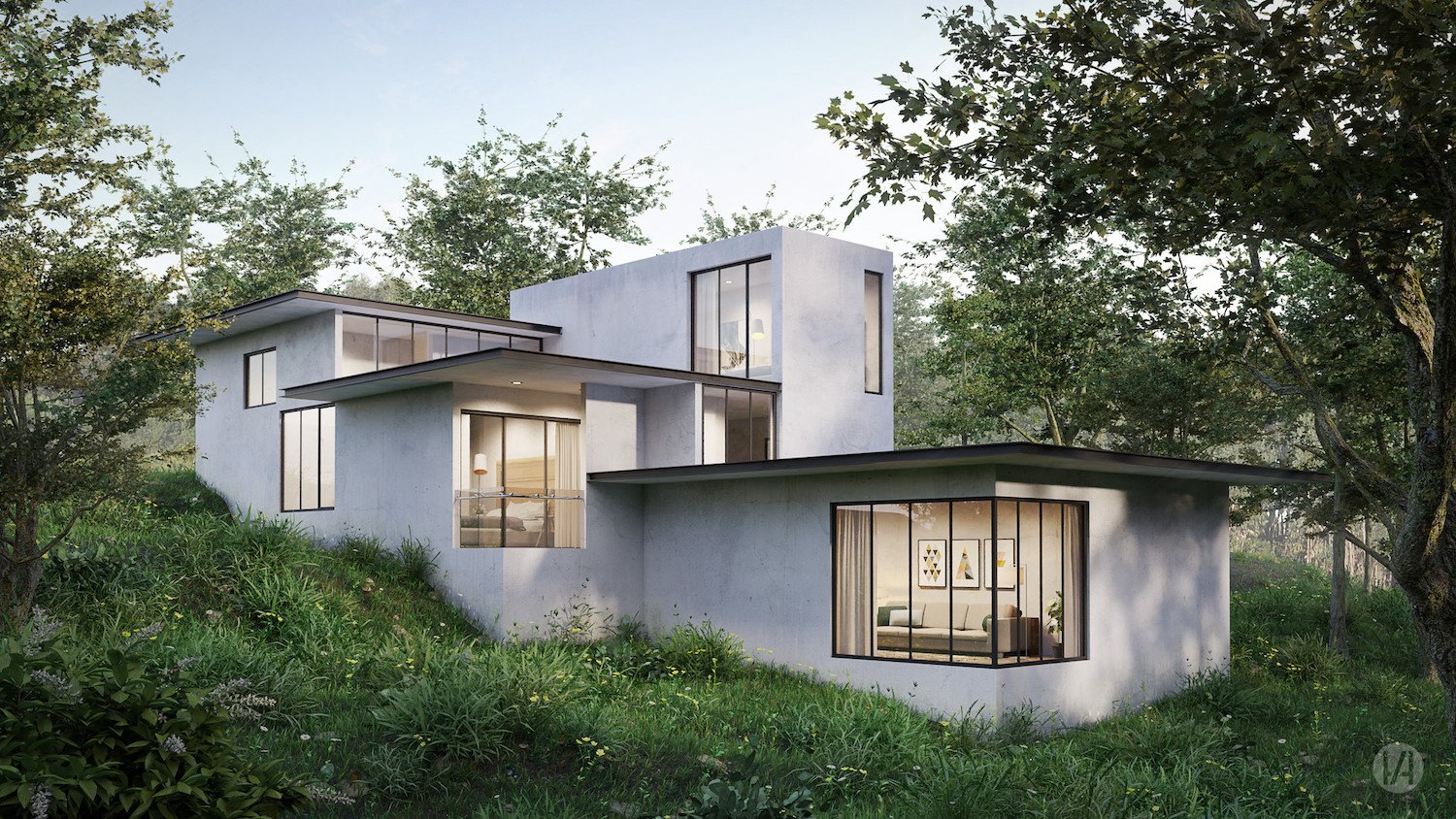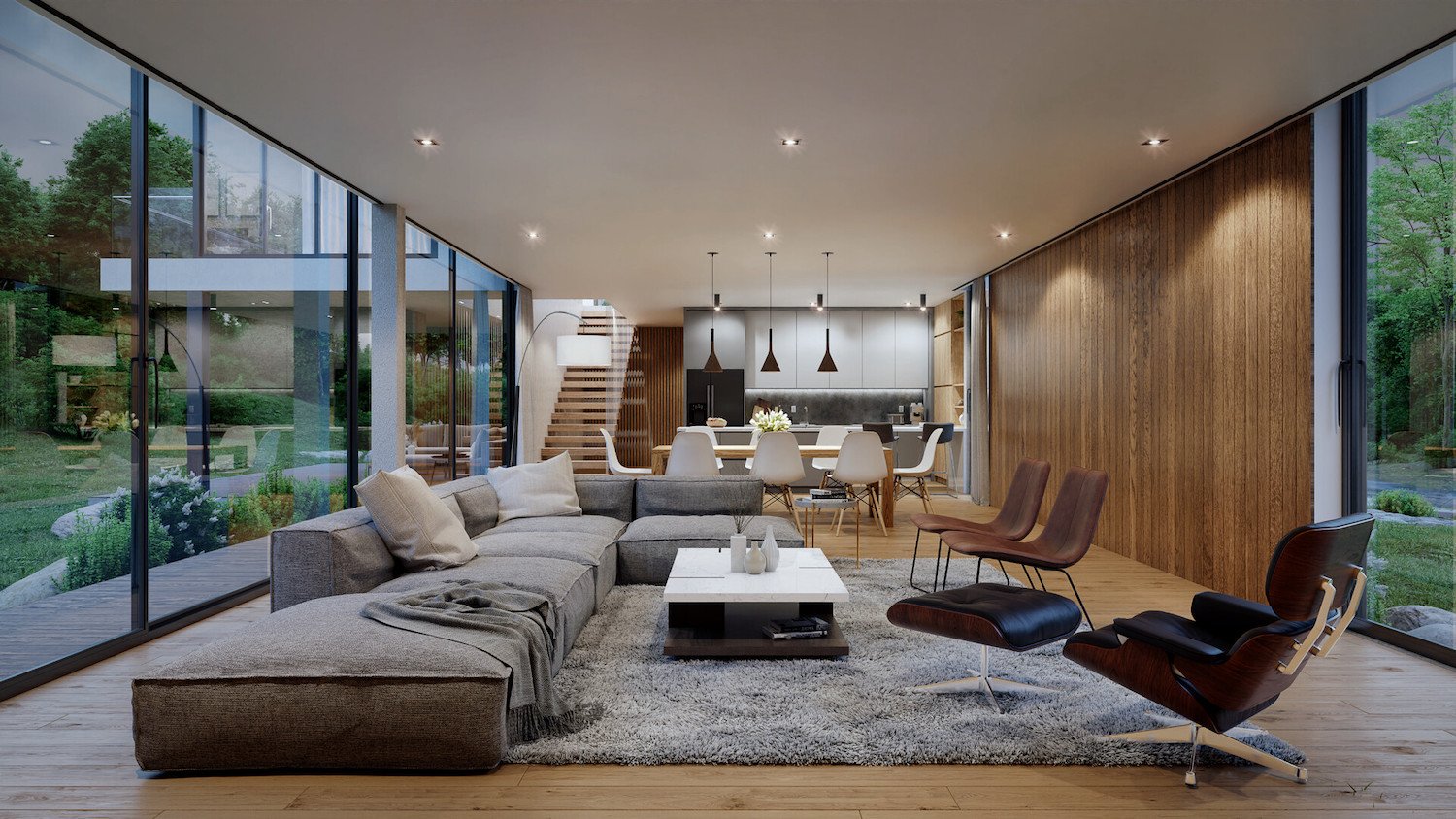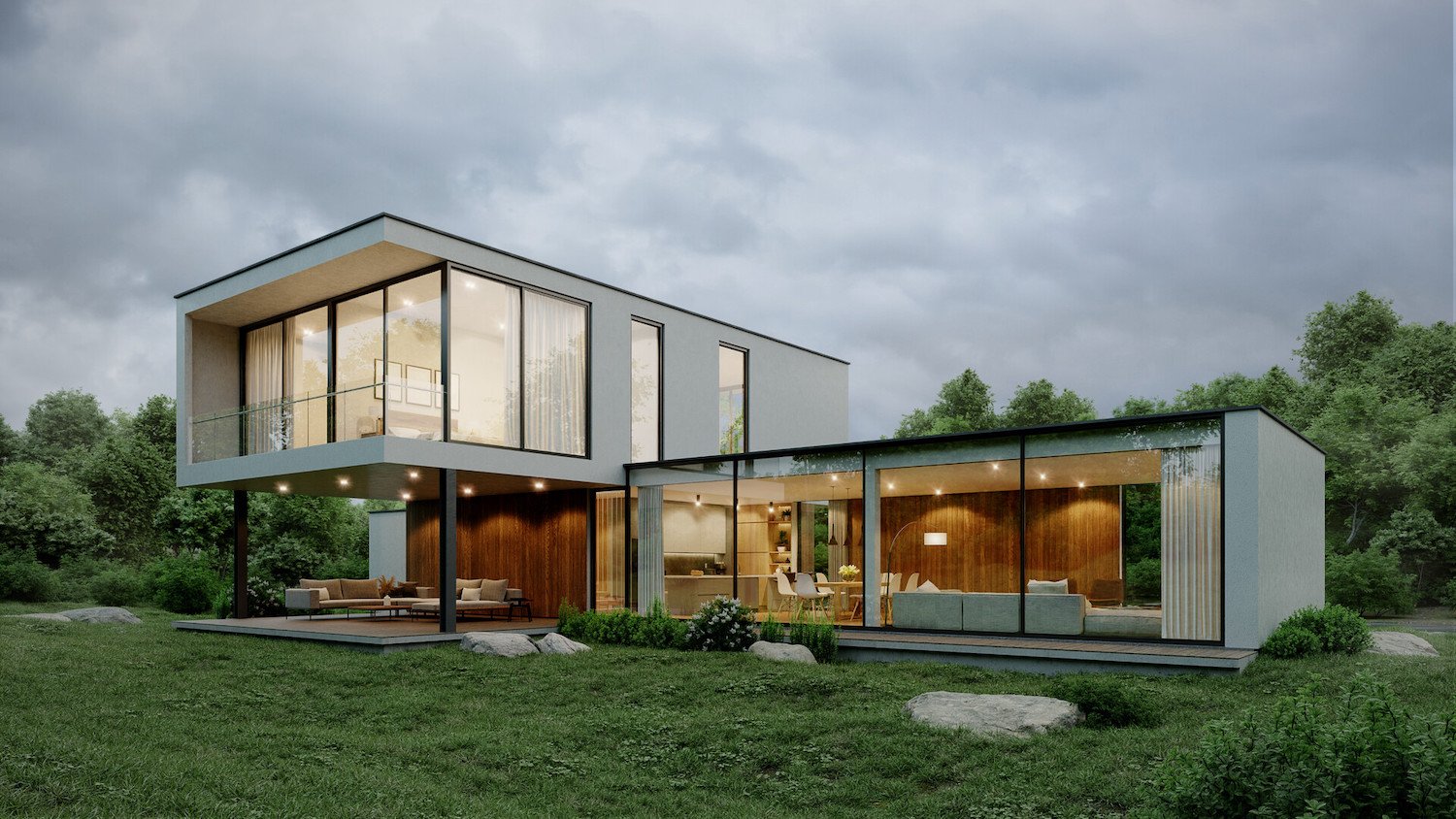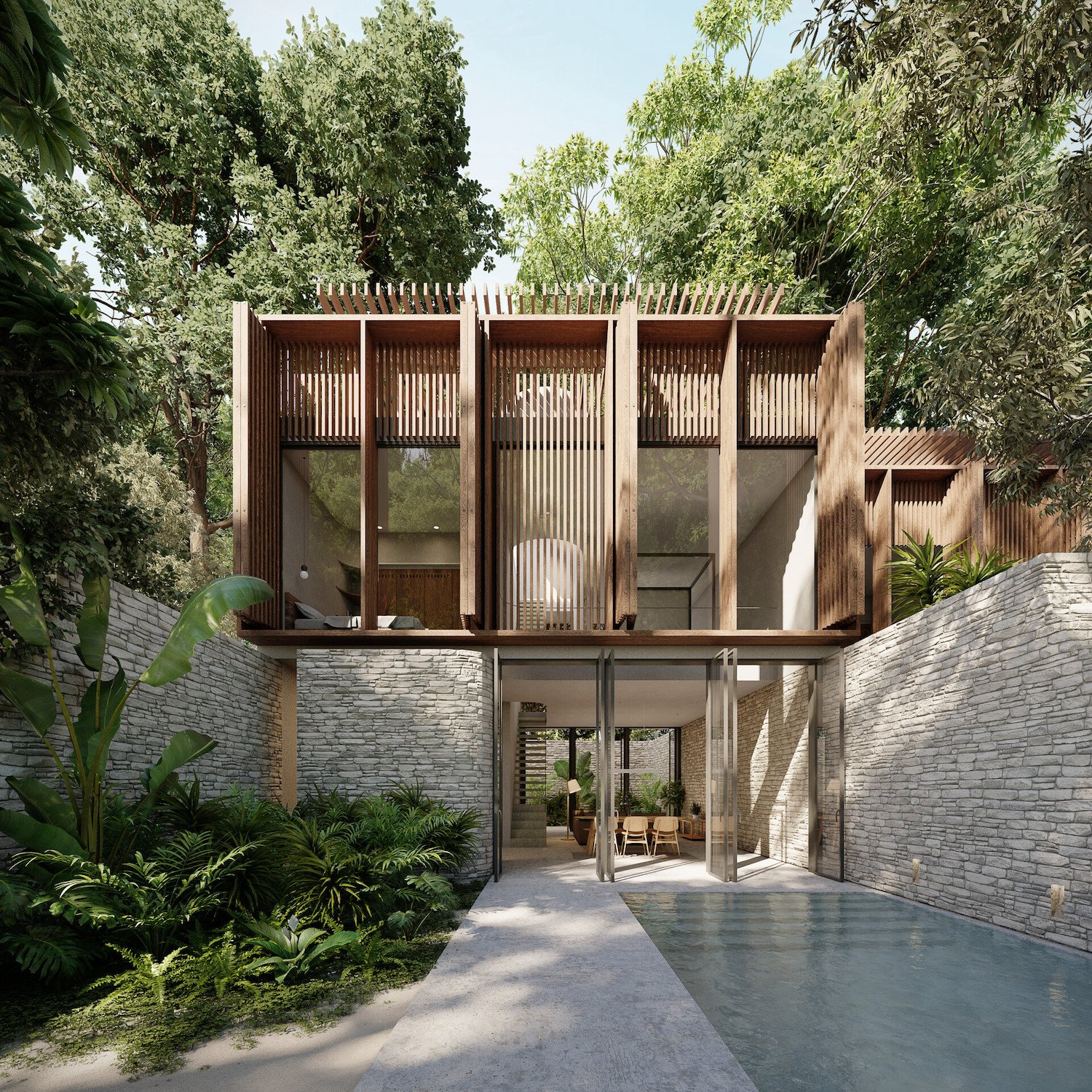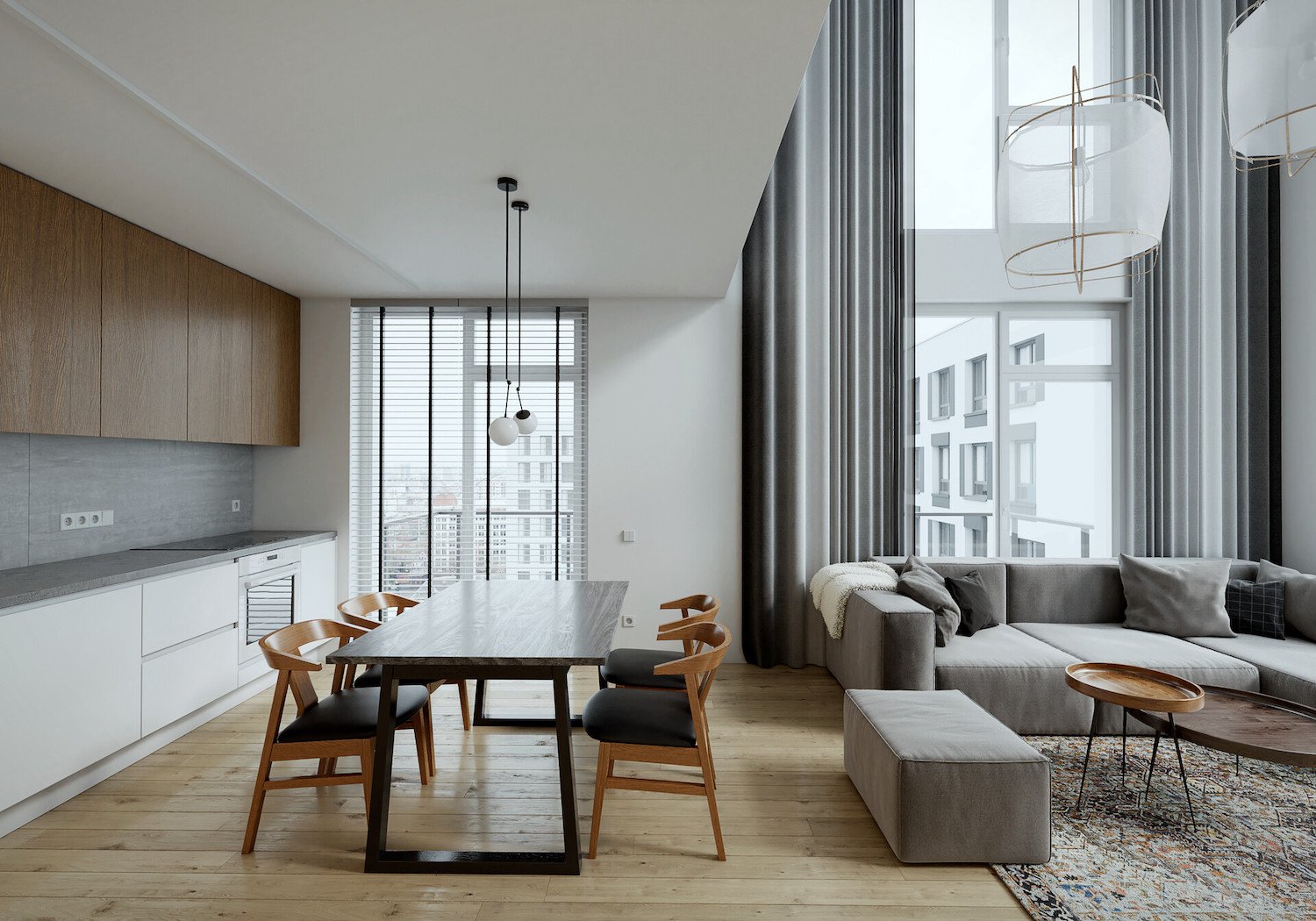Helmy Ardiansyah on the making of 'V60 House'
We speak to Helmy Ardiansyah about his project ‘V60 House’ and get some inside tips on adaptive subdivision, realistic overcast scenes and how to produce incredible work regardless of what software you’re using.
Click on the black image hot-spots to find the Poliigon assets used.
Q. When and how did you get into 3D visualizations?
Helmy: I started my journey as a 3D artist when I was in high school. One day, I went to my friend’s house and found a book about 3D modeling and rendering a Dojo (which is a hall or place for immersive learning for Japanese martial arts) in 3DS Max. I thought it was very cool, but at that time, I didn’t have a PC capable of running 3DS Max, so I found an alternative software called Swift3D and started learning the basics from that.
A few years later, my father bought me a new computer and I started to learn 3DS Max and VRAY from some books (YouTube was not a thing at that time!).
After I finished high school, I continued to study architecture in college, which is when I developed more interest in architecture and 3D visualizations.
Q. What inspires you, as an artist?
Helmy: The idea of making something that actually doesn’t exist (yet) and transforming it into a visual form that can be believed to be real, has always inspires me. I’m just stunned by how someone can make such photorealistic 3D images with the help of technology.
Click on the black image hot-spots to find the Poliigon assets used.
Q. What is your typical workflow for creating a visualization?
Helmy: I mainly use Blender and Cycles/Octane as the render engine. Usually, for a commercial project, I get the 3D file in SKP/FBX or CAD files (or both) in DWG/PDF.
The 3D files could be directly imported to Blender, while the DWG file has to be converted as DXF, and the PDF file will be converted as JPG. The next process is modeling with the CAD file as the reference or adding more detail if the file is already in 3D.
For the doors and windows, most of the time I use Archipack addon; it’s really flexible and has many adjustable parameters to match my needs. If the project requires custom-shaped doors/windows, then it will be modeled from scratch.
I use many addons in my project, but I'm sure most of them are already recognized by many Blender artists:
Scatter and Graswald are used to speed up the process of scattering vegetation into the scene.
To help the modeling process, I use Archipack as I mentioned before, and the Floor Generator addon. Archipack also has the option to make the floor, but Floor Generator has more options and it can randomize the UV, so I don't have to do it manually.
I also use Photographer to manage my cameras and tweak the basic tone-mapping like exposure and white balance for each of them.
To manage my assets, I prefer to use Connecter, which is used by many 3DS MAX artists and now supports Blender.
Q. What has been your favorite recent artwork?
Helmy: My favorite artwork I’ve used Poliigon assets in is ‘V60 House’. In this project, I recreate a photo of the beautifully designed house by WARchitect, originally photographed by Rungkit Charoenwat; you can find the original photos here. It’s modeled in Blender and rendered with Cycles X.
What's special about this project is a tile with a very unique tile pattern; a brick bond pattern, but along the short sides, rather than longways. I couldn’t find any textures with that pattern, so I made it using Poliigon’s Marble Tiles Generator.
I’ve been using Poliigon since 2018; I’ve been a Blender Guru subscriber since about 2012, so as soon as Andrew Price mentioned Poliigon in his tutorial videos, I checked it out right away. Then, thankfully, I won ‘Render of the Month’ 3 times, so I got free access to the whole Poliigon library for 3 consecutive years!
My favorite assets are the generators, which help me a lot when doing commercial projects with custom textures and patterns.
For me, Poliigon is one of the first websites which introduces PBR workflow. Right now the library is growing rapidly and 3D models and texture generators addition is very nice - you can make something great, even just by using the freebies!
Click on the black image hot-spots to find the Poliigon assets used.
Q. What did you learn whilst creating this artwork? Were there any ‘Aha!’ moments?
Helmy: Doing this project, I learned many things that previously I didn’t really care about so much.
The first one was using adaptive subdivision; I barely used this feature for a long time, because of its ‘experimental’ status. In this scene, there is a gravel area around the house. One way to replicate this in 3D is to use some small rock models and scatter them with a particle system. But there are some drawbacks with this method; it can make your scene become heavier and there’s a chance the rocks will overlap with each other. So I tried the other way, using texture displacement. To do this without having to subdivide the mesh dozens of times, you can use adaptive subdivision which can automatically determine the subdivision levels based on how close the part of the geometry is to the camera. Thus, it minimizes the memory usage and keep the viewport smooth. In fact, Blender Guru has a great tutorial on how to do this,.
The second ‘aha moment’ was creating natural and realistic cloudy or overcast scenes. It’s always difficult for me to balance the natural lighting with the artificial one, especially when I use multiple HDRI environments (day/night) in one scene. The ‘Aha’ moment happened when I realized the daytime skylight in the real world was far brighter than the HDRI. So I adjusted the artificial light intensity to match the dusk scene, and then just bumped up the intensity of the daytime scene HDRI to 15 and turned down the exposure, without having to touch the artificial lighting intensity again. Suddenly, everything started to work nicely!
Q. What’s been the most important lesson you’ve learnt as a 3D artist, that you would pass onto other aspiring artists?
Helmy: Be resourceful; don’t focus too much on what software you’re using. I see many great projects that are all about artistic aspects like composition, color, and details, regardless of what software they’re using. In college, I remember admiring Alex Hogrefe’s stunning work created using Sketchup, Kerkythea Render and Photoshop.
Just learn the foundations, and a great result will follow.
Q. What are three other artworks people should check out, if they’re interested in seeing more of your work?
Helmy: You can check out ‘Scandinavian Loft’ for interiors, ‘Lakeside Cabin’ for exteriors, and ‘House 24’ for a combination of both.
Want more from Helmy Ardiansyah?




